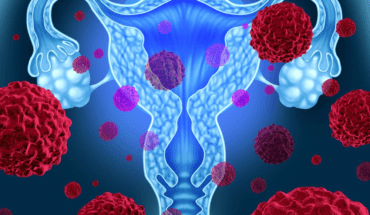University of Queensland research has revealed that having more babies reduces a woman’s risk of endometrial cancer.
Dr Gunn-Helen Moen and Shannon D’Urso from UQ’s Institute for Molecular Bioscience investigated risk factors for endometrial cancer using genetic analysis, and have found that having three babies compared to none could decrease a woman’s risk by 50 per cent.
“We found that the more time a woman spent pregnant or on the contraceptive pill – when the body is exposed to less estrogen – was associated with a lower risk of endometrial cancer,” Dr Moen said.
“While previous studies have shown multiple pregnancies and using the oral contraceptive pill can reduce the risk of endometrial cancer, this is the first study that used genetics to study multiple risk factors at once.”
Endometrial cancer occurs in the lining of the uterus and is the fifth most diagnosed cancer in Australian women, affecting one in 52.
In their genetic analysis, the UQ researchers examined how many years women ovulated, calculated by subtracting time spent pregnant or taking the contraceptive pill from the years spent menstruating.
“It is thought that high levels of estrogen, unopposed by progesterone, is a risk factor for developing endometrial cancer.
“Pregnancy and the contraceptive pill both provide progesterone to oppose estrogen, and this could be why we see a protective effect against this cancer.
“To put it simply, the shorter the exposure to estrogen over your lifetime, the smaller your risk of developing endometrial cancer.”
Researchers found evidence that suggested reducing years ovulating could reduce the risk of endometrial cancer, but the strongest links pointed to child birth.
Dr Moen said there could be several explanations for why pregnancy reduces the risk of endometrial cancer.
“It could be the increase in protective progesterone in the latter stages of pregnancy, or it could be because the body potentially removes pre-cancerous endometrial cells from the uterus during birth,” Dr Moen said.
During the study, the researchers separated some known risk factors for endometrial cancer, such as increased body mass index (BMI) and age at first menstruation and menopause, and looked specifically at the effect of the number of live births and years ovulating.
“In obesity, high levels of estrogen are produced in fat tissue, which makes it a risk factor for endometrial cancer,” Dr Moen said.
Endometrial cancer cases are increasing worldwide, and Dr Moen said this may be due to rising BMI levels, which account for about 40 per cent of endometrial cancer cases in developed countries.
“But we wanted to find out more about the impacts of live births directly, irrespective of other known risk factors.
“We used data to study hundreds of genetic variants, six of which were associated with the number of live births.”
“This study is the first time we’ve been able to establish a cause and effect relationship between the number of births and a reduced risk of developing endometrial cancer,” Dr Moen said.
However, the researchers could not be sure if the same was true for years ovulating and oral contraceptive pill use.
“Analysing larger datasets could help us understand more clearly whether it is the hormonal or mechanical effects of pregnancy that give a more protective effect, as well as dig further into the effect of oral contraceptive pill use.”
This research was published in the journal BMC Medicine.
- New lipid-based pathway discovered as key to memory formation - 25th June 2025
- Crucial link could explain how Alzheimer’s takes hold - 25th June 2025
- Understanding Your Mind Can Improve Daily Life - 25th June 2025







